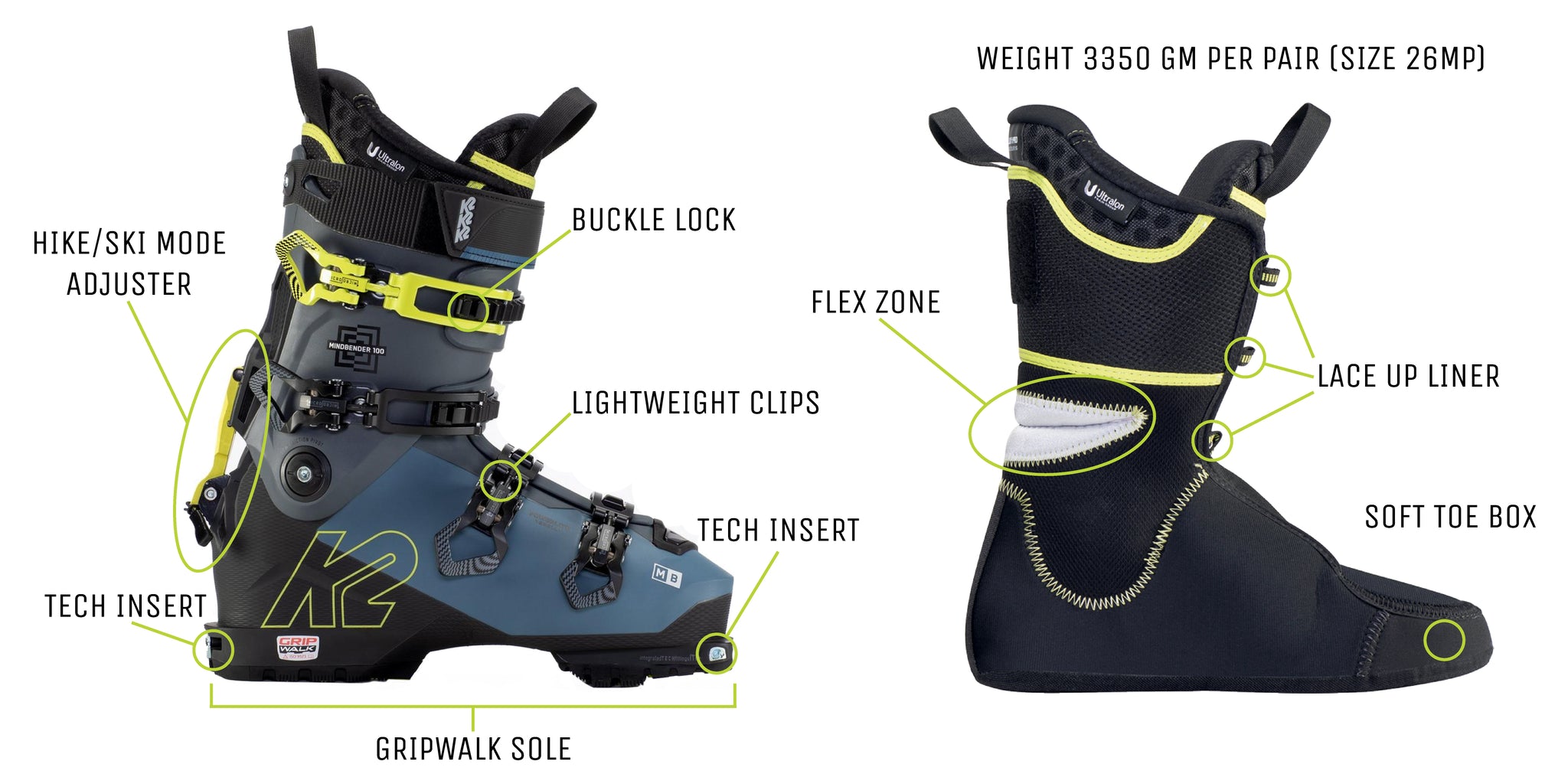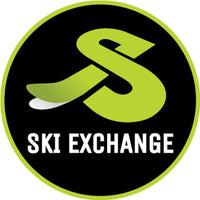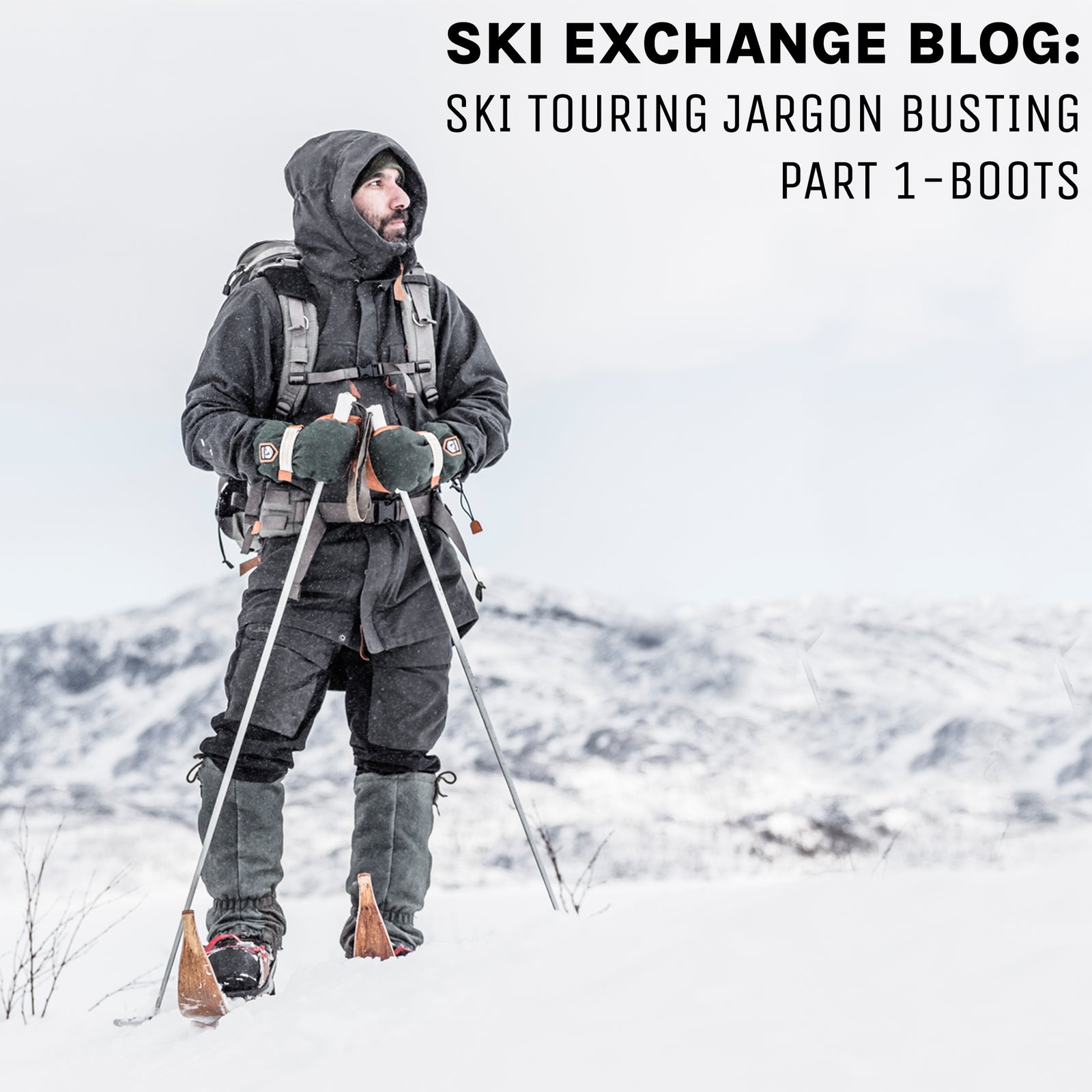Ten years ago, we could enjoy the mountain by either skiing Downhill/Alpine, Cross Country, or Touring. Now the market place has changed thanks a lot to "Marketing departments" but also the improvements and evolution of ski equipment. Recently we've noticed customers have been getting confused by all the information out there. Some assuming they need to take the plunge and purchase two of every item to cover them on any given trip if they enjoy skiing the whole mountain.
In truth having a lightweight ski, binding and boot combination, will make ascending a mountain easier, but what about skiing down?
Super light skis connected to super light boots with super light bindings can feel nervous and clatter on broken powder that has refrozen & is firm underfoot. Many touring setups rely on the weight saving rather than surface area and rocker to float the ski. If you hike up the mountain for a couple of hours to enjoy an epic run home, are these super lightweight products really the best products for the job that you need?
If your goal is to get from one peak to another, maybe spend the night on the mountain and get well away from civilization then, yes, you need a pure touring setup. In all honesty this is a tiny percentage of our customer base & of UK skiers in general, but touring is growing in participation globally & there are options for those that want the best of both worlds.
Now we have a new ski category which boasts several glamourous names including: Freetour, Resort tour, Inbound touring etc with new terms such as Tech inserts, Tech bindings and Hybrid boots. In this and the following blogs we take a look at some of the features of these new products aimed at the new Hybrid Alpine/Touring sector.
Firstly lets take a look at boots.

Traditional Alpine boots have a tall shell cuff, locked into a forward lean position and flat plastic soles to help release from traditional bindings. Although much lighter in recent years Alpine boots are still relatively heavy.
Alternatively Touring boots have a short shell cuff which can be released into walk or hike mode allowing the cuff to atriculate fore and aft whilst ascending. Tech inserts in the toe and heel allow use with traditional Pin bindings. Rubber, lugged GripWalk soles provide grip and comfort when walking but will only work with GripWalk compatible bindings. Lace up liners will have a flex zone in the rear and a soft toe box.
Touring boots are very light between 1500grms-2400grms* (per pair size 26) a traditional pair of downhill boots from 2015 would weigh just under 5KG per pair!!
** Please note: claimed weights by brands are for individual boots not pairs
The downside with a touring boot is a combination of short cuff, thin materials and soft liner. This can make the boot flex unevenly when skiing as the thin plastic reacts to the cold temps and a general feel that the boot needs to be stiffer.
In the last few years manufacturers have combined the strength and support of Alpine boots with the light weight and technical features of Touring boots to develop a new category known as Hybrid, Freetour or Tech boots. They are pretty simple in design but massively affective!
Surprisingly, we have sold this style of boots to people who have no desire to hike up the mountain. Many users just want a light weight boot that's simple to get on and off and easy to walk around the nursery slopes whilst chasing toddlers. The added bonus is the option to try touring in a few years without having to buy another pair of boots.
Let's take a closer look at one of these Hybrid boots the K2 Mindbender 100

Possibly one of the mast versatile boots on the market. It can be a comfortable piste crusier, a touring boot for hiking up the hill, a lightweight off piste fun boot or an easy to walk around boot whilst carrying a try of drinks. Built with Powerlite shell construction to reduce weight the Mindbender 100 is a medium-volume workhorse built for the intermediate resort skier looking to break into the backcountry.
What we have is a boot that's firm and supportive for downhill, also a proper hike mode (50° range of motion). A true firm 130 flex pattern, fully customizable shell and liner, easy to walk gripwalk sole and the safety of it being able to work with modern downhill bindings. Whilst still heavier than a pure tour boot (about 700grms per boot) The Mindbender is 1.6KG lighter than what you're probably skiing on today!
We stock a number of models of Hybrid boots aside from the model we have looked at in this blog. We have the Atomic Ultra XTD 120 and Ultra XTD 90W and the new higher volume Prime XTD 100. The XT3 LV and XT3 80W LV boots from Lange are based on the legendary RX range. The Kore 2 and Kore 2W models from Head have been a staff favourite for the last two seasons. The K2 Mindbender 130 flex, 100 flex and 90W have a fresh and exciting approach to their fitting and the Lupo AX 120 and AX 110W from Dalbello uses a Cabrio shell design and the option to add stiffer or softer shell tongues which can be removed altogether when ascending the hill.

All of our relevant products can be found in the Ski Touring Collection. Next week we will look at Touring Skis and Bindings. Thank you for reading this blog as a reward used code TOUR10 at checkout for 10% off any item until the end of February.
GLOSSARY OF TERMS
ALPINE BOOT - Traditional downhill ski boot with a locked forward lean angle.
ALPINE SKIING - Alpine skiing, or downhill skiing, is the pastime of sliding down snow-covered slopes on skis with fixed-heel bindings. Whether for recreation or for sport, it is typically practised at ski resorts, which provide such services as ski lifts, artificial snow making, snow grooming, restaurants, and ski patrol.
BACKCOUNTRY SKIING - Often used interchangeably with the term off-piste, backcountry skiing actually refers to any area outside of resort boundaries or elsewhere that is not patrolled or cleared of avalanche dangers. This is skiing and snowboarding at your own risk, thus the backcountry is a place for knowledgeable experts only.
BUCKLE LOCK - A method of retaining the clip bale within the ladder when the cuff clips have been loosened to release the full range of motion of the cuff for walking.
CABRIO SHELL - A type of ski boot constructed with three parts: lower shell, cuff, and tongue. Usually has three buckles and a smoother flex compared to overlap boots.
FLEX ZONE (LINER) - A triangular notch of softer material in the rear of the liner to allow the liner to flex backwards with the shell.
FORWARD LEAN - The angle that the upper cuff leans forward in relation to the lower part of the shell. A more aggressive (higher number) lean is usually associated with race boots. A more less aggressive lean is associated with a more upright stance.
FREERIDE SKIING - Term to describe off piste skiing using the lift systems in and around ski resorts. In Freeride skiing the emphasis is on the down but Freeriders will often skin or hike from the top of the lifts for up to an hour or two in order reach untouched snow or interesting lines and may have to skin or hike to get back to the resort after.
GRIPWALK SOLE - A rockered ski boot sole made with rubber that makes walking easier. Also features plastic reinforcements at binding contact points to enhance skiing performance. Boots with GripWalk require bindings designed to accommodate GripWalk (ISO 9523 certified).
HIKE/SKI MODE - A mode in the boot that unlocks the link between the cuff and the lower part of the shell to allow the cuff to articulate backwards. It can also allow the boot to flex forward easier as well. This makes the boot easier to walk or skin in and is seen in Alpine Touring (AT) or backcountry ski boots as well as some freeride/hybrid ski boots.
HYBRID BINDING - Bindings that can be converted from Alpine mode to touring mode. blending the touring efficiency of a pin (low-tech) binding, with the performance of an alpine freeride binding. (See Touring Ski and Binding blog)
HYBRID BOOT - A lightened boot combining the strength of Alpine boots with the technical features of touring boots.
LACE UP LINER - As the name implies lace up liners can be tightened independently from the shell with laces. This is to secure the foot when the shell has been loosened for walking.
TECH BINDING - Also called pin bindings. These are lightweight ski touring bindings which require special inserts in your ski boots.
TECH INSERTS - Metal-reinforced indentations in the toe and heel that make a ski boot compatible with tech bindings for ski touring. Sometimes called “Dynafit inserts.” Require bindings designed for tech inserts (ISO 13992 certified).
TOURING BOOT - Lightweight boot with a walk mode and tech inserts. Designed more for ascending than descending.
WTR WALK TO RIDE SOLE - Walk to Ride (WTR) is a GripWalk type sole that is now obsolete but still found on a handful of boots . WTR soles may not be compatible with new bindings.

